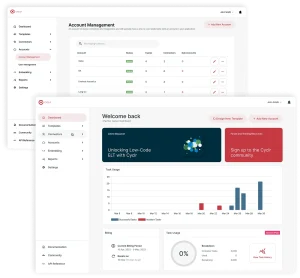Think about the last time you hired a specialist. Maybe it was a plumber for a leaky pipe or an electrician to rewire a room. You didn’t need them on staff full-time; you needed their expertise for a specific, critical project. Well, that exact logic is now revolutionizing the highest levels of corporate strategy.
Enter the fractional executive. This isn’t just a fancy term for a consultant. A fractional leader is an experienced C-level professional—a CFO, CMO, CTO, you name it—who integrates directly into your leadership team, but on a part-time, flexible basis. They’re not just advising from the sidelines; they’re in the trenches, making decisions, leading teams, and driving outcomes. And honestly, it’s one of the most significant talent trends happening right now.
Why Now? The Perfect Storm Fueling Fractional Work
So, why is this model exploding in popularity? It’s a confluence of factors, really. A perfect storm of business needs and workforce evolution.
The Agility Imperative
The market moves fast. Blink, and a new technology or a competitor’s move can change your entire landscape. Companies, especially scaling startups and mid-market firms, need high-level strategic direction now, not after a six-month executive search. A fractional executive provides immediate, seasoned leadership to navigate these shifts. It’s like having a seasoned pilot jump into the cockpit during turbulent weather, not just someone handing you a map from the ground.
Cost-Effectiveness Meets Expertise
Let’s be real. A full-time C-suite salary, benefits, and bonuses are a massive financial commitment. For many companies, it’s simply not feasible, or it’s a risky bet on a single individual. A fractional arrangement gives you access to top-tier talent—often someone who has been a VP or C-level at a Fortune 500 company—for a fraction of the cost. You’re paying for the value and time you need, not a full-time package.
The Rise of the Project-Based Economy
Business is increasingly organized around key initiatives: a digital transformation, a funding round, a major product launch, a market expansion. These are projects with a beginning, middle, and end. They require intense, focused leadership. A fractional executive is the perfect fit for this project-based model, providing the strategic heft for a defined period to see a critical mission through to completion.
Hot Trends in the Fractional Space
The fractional model isn’t static. It’s evolving rapidly. Here’s a look at what’s trending right now.
Specialization Over Generalization
Companies aren’t just looking for “a fractional CMO.” They’re seeking “a fractional CMO with specific expertise in PLG (product-led growth) for B2B SaaS companies in the $5-20M ARR range.” The demand is for hyper-specialized skill sets that can solve very specific, pressing problems. This specificity is what drives incredible ROI.
The Fractional “Team” or “Pod”
Sometimes, you need more than one brain. A new trend sees fractional executives forming small, pre-vetted pods. You might hire a fractional CPO (Chief Product Officer), and they bring along their trusted fractional CTO and Head of Design to work as a cohesive unit. This solves integration challenges and delivers a unified strategy across multiple functions from day one.
Focus on Interim & Transitional Leadership
What happens when your full-time CFO gives notice? The gap between leaders can be debilitating. Fractional executives are increasingly being used as skilled interims. They keep the ship steady, maintain investor confidence, and can even help recruit and onboard their permanent replacement. It’s a strategic pause button, not a panic-induced scramble.
Where You’ll See Fractional Leaders Making an Impact
While any C-suite role can be fractionalized, some are particularly hot right now. The table below breaks down the most in-demand fractional roles and their primary value drivers.
| Fractional Role | Core Impact Area |
|---|---|
| CFO (Chief Financial Officer) | Fundraising, financial modeling, investor relations, navigating rapid scaling. |
| CMO (Chief Marketing Officer) | Building scalable demand gen engines, nailing product-market fit, brand positioning. |
| CTO/CPO (Tech/Product) | Technical roadmap, scaling infrastructure, managing dev teams, product strategy. |
| CHRO (Human Resources) | Building culture, talent acquisition strategies, performance management systems. |
| CRO (Revenue Officer) | Optimizing the entire sales funnel, from lead gen to closing, and improving sales team productivity. |
Is a Fractional Executive Right for Your Company?
It’s not a magic bullet. The fractional model works brilliantly in certain scenarios. Ask yourself these questions:
- Are you facing a specific, high-stakes challenge? (e.g., preparing for a Series B, launching in a new continent, rebuilding your tech stack).
- Is your budget for a full-time, top-tier executive unrealistic? But the need for that expertise is very real.
- Is your current team strong but missing that one strategic leader to align and guide them to the next level?
- Are you in a period of rapid, unpredictable growth or transition? Where agility is more valuable than long-term stability.
If you answered “yes” to most of these, then the fractional route is absolutely worth a deep dive.
Looking Ahead: The Future is Flexible
The trend toward fractional executive leadership feels less like a temporary shift and more like a fundamental restructuring of how we think about work and expertise. It acknowledges that the best talent doesn’t always want a traditional 9-to-5, and that companies need strategic flexibility above all else.
This model builds a bridge between the immense knowledge of seasoned professionals and the dynamic, urgent needs of modern businesses. It democratizes access to world-class leadership. In the end, it’s not about having a full-time executive on your business card; it’s about having the right leadership, at the right time, to solve the right problems. And that, you know, is a trend that’s here to stay.












More Stories
Building a Sovereign Digital Identity for Entrepreneurs and Small Businesses
Beyond Sustainability: Implementing Regenerative Business Models for Long-Term Resilience
Business Models and Ethics for Commercializing Climate Adaptation Technologies